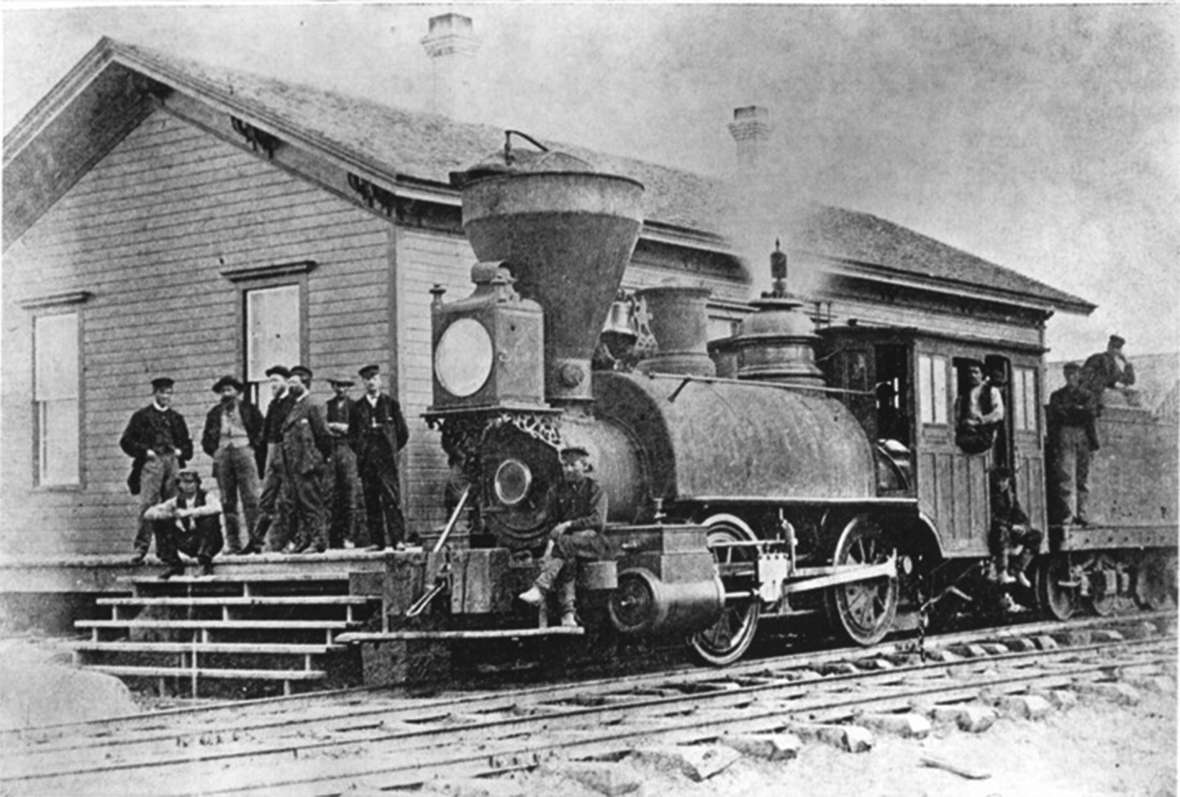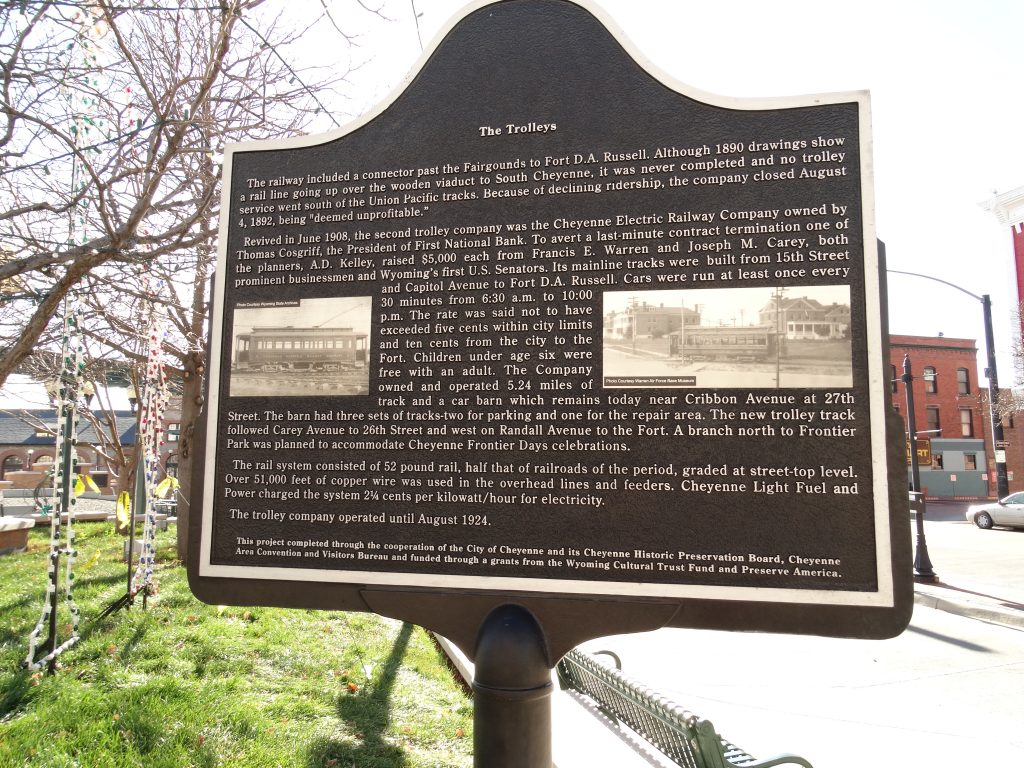-----
 |
| The first Union Pacific engine in Cheyenne, 1867. (WyoHistory.org) |
Cheyenne was first established by the Union Pacific's surveying team on July 4, 1867 while on its Hell-on-Wheels bender towards Promontory Summit, with General Grenville M. Dodge receiving credit and naming the town after the local Cheyenne tribe. The UP would cross the Crow Creek, a tributary of the North Platte River, here and the town would be joined by Fort D.A. Russell three miles west. In November 1867, the UP's construction team would finally reach Cheyenne and skyrocket the population to well over 4,000, earning its nickname, "The Magic City of the Plains."
 |
| Cheyenne's Union Pacific depot, 1909 (Wyoming Tribune Eagle) |
Usually, many cities would be excited at the prospect of a new trolley system, but not Cheyenne: citizens living along 17th St. raised complaints that trolley bells would cause too much noise pollution. Mayor Charles Riner decided to ignore these complaints, as one does. June 1887 saw the final routing plans of the CSR going from the UP depot, head north to the Cheyenne Fairgrounds via 16th, Eddy (now Pioneer), 22nd, O'Neil, 25th, Dillon Ave, and 27th St.
 |
| Cheyenne in 1889, one of the rare shots of the Red Line horsecar heading fo the Fairgrounds (C.D. Kirkland) |
The next month, three brand new horse-cars would emerge from the Cheyenne Carriage Company. The contract originally called for four cars, with more from outside manufacturers. Unfortunately, several of the contracted companies had undergone massive fire damages, so when the system opened in January 1888, there was only one car for each of the three lines: Red Line to the fairgrounds, Yellow to Russell Ave, and Green from the Capitol to the Cemetary. By contemporary newspaper accounts, the horsecars were "very well built".
Ridership declined early for the horse-car line, and it quietly closed in August 4, 1892 after being deemed "unprofitable." After a gap of 14 years, the Cheyenne Electric Railway Company (CERCo.) was established by Thomas Cosgrove, president of the First National Bank of Cheyenne. With additional capital from prominent businessmen Francis E. Warren and Joseph M. Carey ($5000 each, which in 2019 dollars is $144,075), the new electric railway could now reach Fort D.A. Russell from 15th Street and Capitol Avenue in just 5.24 miles of track (the .24 being the carhouse at Cribbon Avenue). A nickel could get you anywhere in the city, but heading out to the Fort cost you a dime, and if you were under six, you could ride free with an adult.
 |
| A Colorado Springs & Manitou Railway electrified horsecar, probably similar to what ran on the CERCo. (Pikes Peak Newspapers) |
 |
| A postcar view of a CERCo Birney car with the Union Pacific depot in the background (Don Ross) |
The rolling stock of the CERCo. comprised of antique Brill cars from the same era as the Portland Council Crests. After WWI, the CERCo. would purchase a new fleet of Birney cars to ply the streets in 1922. These cars were light enough to run on the system's 52 lb rail, which even for street track was absolutely light. The system would go on for two more years before it was purchased privately in 1924 and converted to buses. The Birneys would be sold off to various railways, including the Fort Collins Municipal Railway, and regrettably the only trolley that still runs in the Magic City of the Plains is a tourist trolley bus. All that remains of the CERCo. is the original carbarn and an informative plaque.
 |
| The CERCo's headstone, for all intents and purposes, showing two of the Brill cars. (Wyoming in Motion) |
-----
So that is the very very brief and often patchy history of the Cheyenne Electric Railway Co. If anyone does have anymore information about this boonie Birney system, please hit me up on my twitter account or get in touch with my Wyoming-based editor on his. You can also financially help us by buying a shirt (new designs incoming). Next week, we look at the Sheridan Interurban, but until then, ride safe and stay healthy!

The 3rd picture down is looking east on what's now W Lincolnway at the cross of Carey.
ReplyDelete